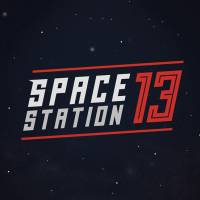
Space Station 13
Release Date: February 16, 2003
RPG, science fiction, free-to-play, 2D, online, top-down, action RPG, simulation elements, social deduction game, multiplayer, internet
Set in the futuristic science fiction world turn-based, multiplayer action RPG action, developed using the free BYOND program. Take on the role of one of the crew members of the space station and participate in the unique Space Station 13 session.
Space Station 13 is a free action RPG that uses a top-down camera setting. The main location depends on the server on which the game is played. Events may take place on a futuristic space station, spacecraft or exoplanet. Space Station 13 was released in 2013. Exadv1 was originally responsible for its production.
Plot
None of the servers have a single storyline, most have their own, customized stories. In general, however, Space Station 13 takes place in the 24th century at a research station owned by a megacorporation called Nanotrasen. The station was established to conduct research on the recently discovered plasma mineral (on some servers also known as phoron), whose properties and possible ways of use are unknown. The power and influence of Nanotrasen has made the company a government institution, but what role it plays in history (good, bad or neutral) depends on the server.
Due to its high position and monopoly on the new mineral, Nanotrasen has become the target of a number of external aggressors. Among them, we can mention: Syndicate (a coalition of smaller companies and planetary governments), Space Wizard Federation (representatives of extraterrestrial species, capable of taking any organic form that they absorbed). The mission of the crew at the station is to keep the facility in operation and protect it from hostile attacks.
Mechanics
On each of the available servers, the game can be played differently, as it depends on individual rules and settings. No matter what server, at the beginning of each turn the player determines the function that his crew member will perform at the station. A hero can be either a captain, head of staff, or an engineer, scientist, medical officer, security officer, or one of the lower-ranking employees, such as a janitor or a simple assistant. Each role affects the type of duties that the player will carry out. Sessions are usually not connected with each other, so in the next one the player can choose another job, re-create the character and change his style of play.
Although the station may look slightly different on each of the servers, it generally has eight departments: Command (responsible for commanding the station), Security (law enforcement, maintaining calm and responding to emergencies), Engineering (responsible e.g. for the proper functioning of the media and doors and the oxygen supply at the station), Science ( e.g. conducting research on technologies and genetic mutations), Medical (keeping crew members in good condition, carrying out operations, creating clones for the deceased players), Supply (extraction of minerals on a nearby planet and control of station resources), Service (keeping the station clean, providing food and entertainment), Synthetics/Silicons (a department consisting of A.I and cyborgs usually subordinate to the Three Laws of Robotics, prohibiting A.I from committing illegal acts such as assaulting a crew member).
At the start of the round, one or more players are randomly assigned an antagonist role as well as a secret target, which may lead to the disruption of the mission. If the crew members do not start turning against each other as a result of pure paranoia, over time they will have to face different types of enemies dependent on the turn, such as shape-shifting aliens, Syndicate agents, etc. In addition, station workers are threatened by dangers typical of working in space: decompression, radiation storms, airlock and engine failures and others.
During the game, the player can interact with almost any object and creature in a context-sensitive manner. Each of these interactions may lead to different results (using a crowbar on a different player will result in an attack, while using a tool on the floorboard may lead to dragging the players into a trap). Moreover, the player has the possibility to change the "intentions" of his character (there are four available: Help, Disarm, Grab, Harm), which influences the actions taken by him. For example, the use of the character's hands on a player who has fallen, with the intention of helping, will cause the character to help him up. However, using the intention of damage will make the character hit him or kick him.
As a result of the existence of antagonists in the game, and sometimes incompetence of players who cannot do their job properly, each turn can quickly turn into pure chaos. While some communities set the duration of each match in advance, sometimes rounds end when the situation becomes critical and evacuation procedures are initiated.
Technical aspects
Space Station 13 has simple, two-dimensional graphics.
Videos and Screens
Space Station 13 Summary
Platforms:
PC Windows
Space Station 13 System Requirements
PC / Windows
Minimum: Intel Pentium 4, 1 GB RAM, graphic card Intel HD or better, Windows XP/Vista/7/8/10